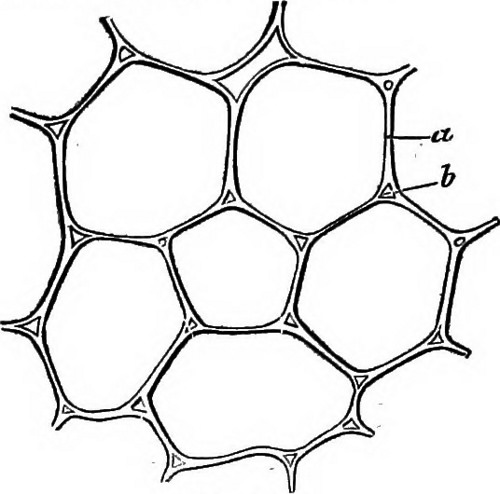Image from page 61 of “How crops grow. A treatise on the chemical composition, structure, and life of the plant, for all students of agriculture ..” (1868)

Image by Internet Archive Book Images
Identifier: cu31924000896575
Title: How crops grow. A treatise on the chemical composition, structure, and life of the plant, for all students of agriculture ..
Year: 1868 (1860s)
Authors: Johnson, Samuel William, 1830-1909
Subjects: Agricultural chemistry Growth (Plants)
Publisher: New York, O. Judd & company
Contributing Library: Cornell University Library
Digitizing Sponsor: MSN
View Book Page: Book Viewer
About This Book: Catalog Entry
View All Images: All Images From Book
Click here to view book online to see this illustration in context in a browseable online version of this book.
Text Appearing Before Image:
n only be discovered on expelling it by heat or other-wise,—and may be designated as the hygroscopic water ofvegetation. The amount of water contained in either fresh or air-dry vegetable matter is constantly fluctuating with thetemperature and the dryness of the atmosphere. 2. The Cellulose Gbottp, oe the Amyloids.This group comprises Cellulose, Starch, Inulin, Dextrin,Gum, Cane sugar. Fruit sugar, and Grape sugar. These bodies, especially cellulose and starch, form byfar the larger share—perhaps seven-eighths—of all the drymatter of vegetation, and most of them are distributedthroughout all parts of plants. Cellnlose, C,, H,„ 0^„.—Every agricultural plant is anaggregate of microscopic cells, i. e., is made up of minutesacks or closed tubes, ajihering to each other. 56 HOW CROPS GBOW. Fig. 10 represents an extremely thin slice from Iho stem of a cabbage,magnified 330 diameters. Tbe united walls of two cells are seen in sec-tion at o, wliile at b an empty space is noticed.
Text Appearing After Image:
Fig. 10. The outer coating, or wall, of the cell is cellulose. Thissubstance is accordingly the skeleton or framework of theplant, and the material that gives tough-ness and solidity to its parts. Next towater it is the most abundant body inthe vegetable world. All plants and all parts of all plantscontain cellulose, but it is relatively mostabundant in their stems and leaves. Inseeds it forms a large portion of the husk,shell, or other outer coating, but in theinterior of the seed it exists in smallquantity. The fibers of cotton, (Fig. 11, a,) hemp,and flax, (Fig. 11,6,) and white cloth andunsized paper made from these materials,are nearly pure cellulose. Tlie fibers of cotton, liemp, and flax, are simply „.^ „ long and tljioli-walled cells, the appearance of ° which, when highly magnified, is shown in fig. 11, where a represents the thinner, more soft, and collapsed cotton fiber, and b the thicker and more durable fiber of linen.
Note About Images
Please note that these images are extracted from scanned page images that may have been digitally enhanced for readability – coloration and appearance of these illustrations may not perfectly resemble the original work.
Cook: Why wouldn't Mead sign hemp extract bill?
Colorado farmers started growing hemp in 2012; today, a handful of Colorado entrepreneurs manufacture the life-enhancing CBD — which, incidentally, is also effective in the treatment of migraine headaches, nausea from cancer treatment and many other …
Read more on Casper Star-Tribune Online
